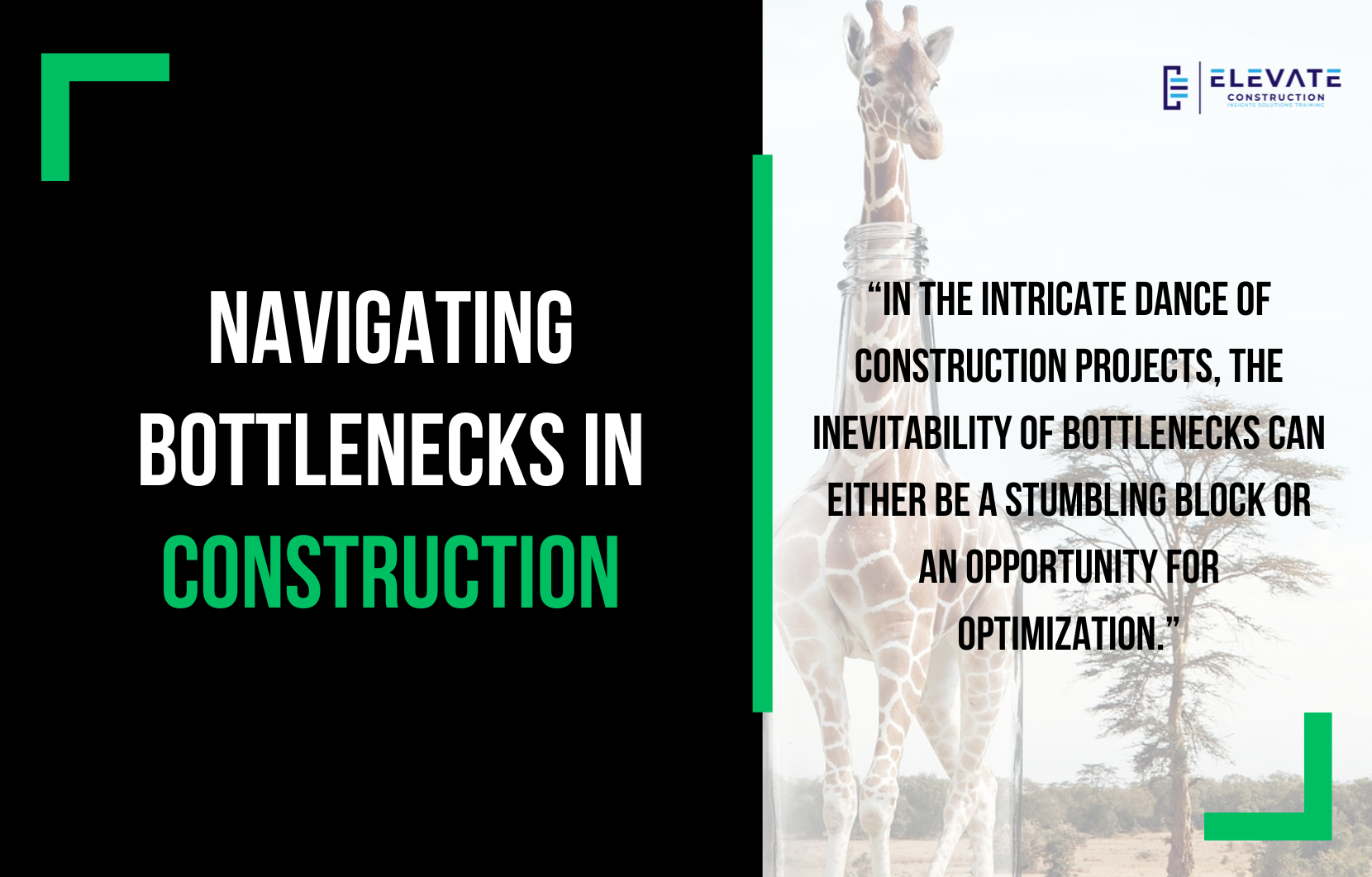In the intricate dance of construction projects, the inevitability of bottlenecks can either be a stumbling block or an opportunity for optimization. Recognizing and addressing these limiting factors is crucial for maintaining a smooth and efficient workflow. Here, we delve into the various types of bottlenecks and introduce a strategic approach inspired by Clark’s FOCCCUS method.
Identifying Construction Bottlenecks
Construction projects are dynamic, multifaceted endeavors, and bottlenecks can manifest in various forms:
☑ Trade (Process) Bottlenecks
☑ Zone (Location) Bottlenecks
☑ Supply & Supply Chain Bottlenecks
☑ Labor Resource Availability Bottlenecks
☑ Information Availability Bottlenecks
The FOCCCUS Approach: Unraveling Bottlenecks
Clark’s FOCCCUS method provides a systematic way to pinpoint and optimize bottlenecks:
↔ Find the Bottleneck:
Uncover the constraining factor in the process or system. This requires a keen understanding of the project’s intricacies.
↔ Optimize the Bottleneck:
Once identified, focus efforts on enhancing the efficiency of the bottleneck. This may involve streamlining processes or introducing innovative solutions.
↔ Collaborate with Others:
No bottleneck exists in isolation. Engage with team members or external partners who can contribute insights or resources to optimize the identified constraint.
↔ Coordinate Efforts:
Effective collaboration requires coordination. Ensure that efforts are synchronized to maximize the impact of bottleneck optimization.
↔ Curate Appropriate Focus:
Direct attention, resources, and expertise toward the bottleneck. A targeted and strategic approach is essential for meaningful optimization.
↔ Upgrade Skills, Resources, and Equipment:
Invest in the necessary improvements to overcome the bottleneck. This may involve training, acquiring new resources, or upgrading equipment.
↔ Start Again:
Optimization is an ongoing process. After addressing one bottleneck, begin the cycle anew to identify and enhance the next limiting factor.
The Law of Bottlenecks: A Continuous Cycle
Optimizing one bottleneck does not mark the end of the journey. The Law of Bottlenecks asserts that as one constraint is resolved, others may emerge. Embracing this reality is integral to maintaining a proactive and adaptive approach.
Keep in mind, velocity originates from a smooth flow, not from exerting force.
Rushing and pushing may seem like shortcuts to speed, but true efficiency arises from a continuous and optimized flow.
Expertise vs. Amateurism: The Crucial Distinction
The adage holds true in construction: “Experts remove the kink—amateurs increase the pressure.” Distinguishing between solving the root cause (experts) and merely alleviating symptoms (amateurs) is paramount. The FOCCCUS method aligns with the expert’s approach, aiming for lasting and impactful solutions.
In the intricate dance of construction projects, recognizing and addressing bottlenecks with the FOCCCUS approach ensures a harmonious and efficient workflow. By embracing the law of bottlenecks and prioritizing systematic optimization, construction teams can navigate challenges with expertise, ensuring sustainable project success.
If you want to learn more we have:
-Takt Virtual Training: (Click here)
-Check out our Youtube channel for more info: (Click here)
-Listen to the Elevate Construction podcast: (Click here)
-Check out our training programs and certifications: (Click here)
–The Takt Book: (Click here)
Discover Jason’s Expertise:
Meet Jason Schroeder, the driving force behind Elevate Construction IST. As the company’s owner and principal consultant, he’s dedicated to taking construction to new heights. With a wealth of industry experience, he’s crafted the Field Engineer Boot Camp and Superintendent Boot Camp – intensive training programs engineered to cultivate top-tier leaders capable of steering their teams towards success. Jason’s vision? To expand his training initiatives across the nation, empowering construction firms to soar to unprecedented levels of excellence.
On we go!


